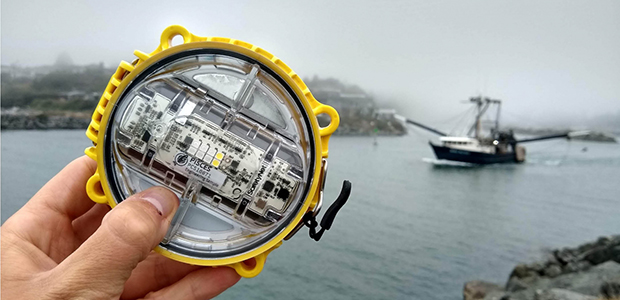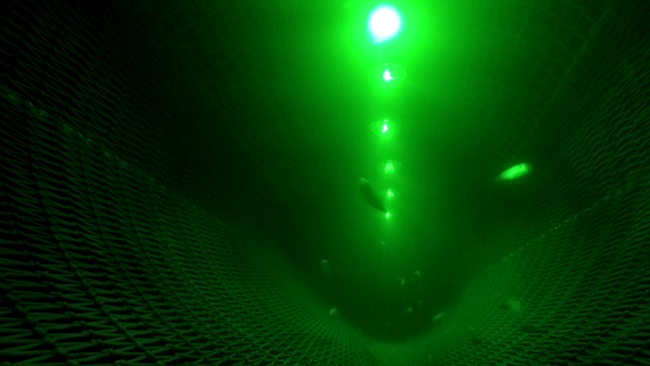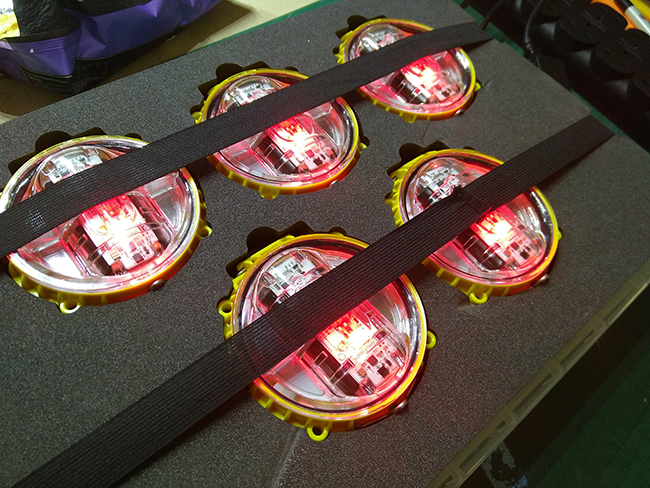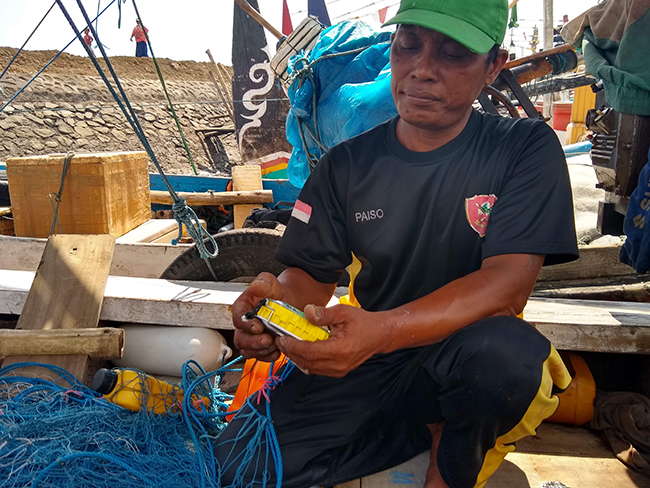
Catch of the day!
Growing up in a small seaside town, one of my earliest memories is sitting on the sea wall with my dad, eagerly tucking into a pot of cockles, all the while watching the comings, goings, and general hubbub of the fishing boats coming in and out of the harbour.
It is with great sadness therefore, that I’ve been a spectator to the slow eroding of local fishing fleets over the last few decades, and its knock-on impact on coastal communities, brought about by rising costs, tighter margins, quota systems and stricter regulations.
A catalyst for this decline can be seen when you look at the industry in numbers - one in five fish caught globally is unmarketable, endangered or too small to land legally. This leads to 16 million tonnes of fish wasted every year with 20% of fishing vessel space being unused. In turn this leads to huge environmental, economic and ecological consequences. Depleting ocean stocks will also be exacerbated by the fact that there will be an estimated 70% increase in fish demand by 2050.
Regulations such as the EU Discard Ban, has made discarding bycatch illegal, and while on the one hand this will assist the reduction of waste, there have been examples of fishermen being fined and even arrested for throwing fish back into the sea, as they lack the tools to avoid catching the fish in the first place, leaving them in a literal catch-22 situation (pun intended). However, one company is using lighting technology to make fishing more sustainable and crucially more profitable for fishermen all around the world.
Seeing the light
SafetyNet Technologies is using LED lighting attached to different types of fishing gear, including gill and drift nets, pots and traps, as well as trawls. Different species of fish are either attracted or repelled by the type and colour of light used. Therefore, by deploying SafetyNet’s PISCES lighting kit, fishermen can target specific species far more accurately.
PISCES illuminates underwater nets with one of six different colours of light that can be selected according to the target catch species, and which bycatch species you wish to avoid – reducing bycatch by 90% and improving fishing revenues by up to 25%, by increasing deck space and reducing the number of times fishing boats have to go out to sea.

The PISCES kit is easy to fit, its wireless recharge is designed specifically for the fishing environment, it is easy to work with on open water, requires minimal interference to fishing operations, does not weaken or weigh down fishing nets, and is operable while wearing gloves. It retrofits to many types of fishing gear enabling fishermen to comply with new regulations that reward the use of sustainable equipment. SafetyNet will receive its first mass produced batches of PISCES in September.
Aran Dasan, the company’s CTO, said: “A fisherman would receive a PISCES kit of ten lights which they would use to illuminate their entire trawl net, which could be the size of a building. And by illuminating the net with exactly the correct recipe of light, we allow the fisherman to effectively program their net to attract or repel exactly the species the fisherman wants. As humans, we cannot see infrared or UV light - it’s invisible to us. And as it turns out, different species of fish also have these invisible blind spots.”
Winding the clock back
SafetyNet Co-founder Dan Watson was first made aware of the problem while studying mechanical engineering at Glasgow University, and being situated near to the fishing ports of Aberdeen and Peterhead, the issues impacting the fishing industry were brought to Watson’s attention and was the focus for his final year project.
He said: “Since the European legislations became stricter in the last few years, fishermen have to bring any bycatch back to land and declare them against their quota - they can’t throw them back. This means they have less of their quota available for desirable and legal species.”

Watson’s research began by looking at methods that had already been used to separate out fish in fishing gears and why they didn’t work. This led him to stumble upon a research paper written nearly 30 years ago, looking at the ways different species of fish reacted to flashlights. This in turn raised the question that if this method yielded results in a tank, why not on a fishing trawler? In addition, over the last few years technologies such as LEDs and cheap manufacturing of hardware and electronics have opened up new commercial opportunities for light in a broader range of applications.
Over the next decade Watson, along with various academia and research institutions, have been experimenting with different levels of light and how it altered responses across different species, adding: “I worked with fishermen and scientists and created different prototypes to test various theories about light and fish behaviour. Some species can see wavelengths of light and others can’t, so you can start to broadcast very directly to particular species based on what they can or can’t see. And then based on that behavioural response, you can then deploy a particular type of light. We’ve been building up a database of which lights need to be deployed per species. And so fishing crews can deploy different types of light depending on what they’re trying to catch.”
Product development
SafetyNet Technologies has successfully trialled its technology on haddock, dab, plaice, whiting, prawns and nephrops, mackerel, turtles, and crab, and is now being applied in a way that creates value for the fishing sector. However, Watson added that the company is always looking to identify other species that may be impacted by light as part of its R&D and research pipeline.
He added: “We are kicking off trials that will look at how we can stop certain mammals, such as dugong, being caught in gill nets. We’ve also been involved in work conducted by the likes of Exeter University, and the National Oceanographic and Atmospheric Administration (NOAA) in the US, looking at ways to repel dolphins, porpoises and manta rays from particular fishing gears.
“So we’ve been partnering up with those guys to both learn from their research, and to assist as it progresses further, as our devices are a lot more accurate than those that are currently being used to conduct research of this type.”

Throughout product development SafetyNet has used a human centred design process, and the PISCES solution has been designed for fishermen by fishermen – meeting the needs of the industry, both in terms of the product and its usability, but also its financial price point.
Watson explained that there are multiple ways in which the ocean reacts to technology, and this is part of the reason why product development has taken so long. Due to the challenging environment, products used in the fishing industry need to be really robust and need to undergo rigorous testing procedures, around issues such as vibration, UV rays, pressure, impact, and even chemicals.
“The testing process has had to be really thorough to make sure that the equipment will survive, or at a minimum, last the two-year period of the subscription contract that the fishermen would sign up for. This work has included hiring in individuals with expertise in areas such as autonomous underwater vehicle design and underwater electronics. Quality is super important for us and our brand. The fishing industry is so tough, so our technology needs to work.”
The appliance of science
While the technology behind the PISCES kit is robust and high quality, Watson explained that SafetyNet’s ‘secret sauce’ is the science behind it. The company are founding members of a ICES-FAO Group, incorporating over 40 scientists from around the world, that work on the science behind how to use light effectively.
“We work with them as a technical partner,” Watson continued. “A big part of our service offering for fishing crews is access to a customer success manager, who can channel the science from our team into how the technology can be set up properly, easily deployed and used effectively.
“We also have research projects that we are working on which are looking at how to lower the cost and therefore raise the financial accessibility for deployment in artisan fleets in less economically developed countries, in order for PISCES to scale across all the different fisheries.”
Light vs sound
Light certainly isn’t the only solution to have been deployed in the effort to reduce bycatch in the fishing industry. Sound has been used for several years, and Watson explained that in the right context it can be very useful. Sound travels very well underwater which is useful if the application is covering a wide area.
However, the key benefit of sound-based solutions is also a shortcoming. The further sound travels the harder it is to control the range under water. What has been observed as a result is something called the ‘dinnerbell’ effect, where species become habituated to the sound that they hear, and rather than swimming away they could view it as a resource of food and may swim towards it.
In turn, this may attract species such as dolphins and porpoises, etc. which might not otherwise have approached the fishing gear. “The difference with light is that it is a very local effect and can be controlled in terms of the range that it broadcasts to. And because of the way that the visual acuity of different species works, it can be more tuned to suit individual needs,” Watson added.
“LED technology has been around for quite some time, and there has been ongoing research around its potential, but as we’ve seen quite often, technology transfer from the research sector and academia into industry takes a long time, and in our case it took a paper that was 30 years old to really get this project going.”
Funding and progress
While SafetyNet Technologies were primarily bootstrapped in the early years, its work soon attracted the attention of the likes of Young’s Seafood, Dyson and Sir Richard Branson. “Media coverage led to us being invited to different European funded projects which was great, and really helped. Philanthropists such as Eric and Wendy Schmidt also got involved and have been very generous in terms of supporting company growth with grants via their Schmidt Marine Technology Partnership that is run out of San Francisco.”
In 2019, SafetyNet decided that it made sense to take some actual equity investment and some dilutive funding. “We needed to scale and while the grants we were getting were brilliant, they were irregular, and we couldn't rely on them,” Watson continued. “So, we started looking for seed funding and at end of last year we closed a round of £1.1m with Althelia Sustainable Ocean Fund, Mustard Seed, and Conservation International Ventures. This has helped raise our runway alongside the other grants that we are still winning.” Most recently, SafetyNet Technologies secured a place in the top 25 of the Postcode Lotteries Green Challenge, one of the largest international competitions for green startups.
Watson added that SafetyNet has had to navigate some choppy waters as, for regulatory reasons, the relationship between science and the industry has not always been convivial. And so, for a company that is science focused in terms of how it applies technology, it has been quite hard for SafetyNet to convince people.
“We’ve had to really work on pilots and case studies to get those proof points out there,” he added. “As we complete more of these pilots it is getting easier, and as people are responding to changes in regulation, having those conversations is becoming more realistic.”
Manon Joguet, Fisheries Project Manager at FROM Nord, a fish producers’ organisation, added: “In the past, a fisherman just had to be a fisherman. Now they have to be a lawyer, manager, and fulfil a number of other roles that take time away from the job at hand.
“I would really encourage other producer organisations to collaborate with scientist and technology teams, and of course SafetyNet, because by involving fishermen directly in the discussions, they are more likely to try out what has been decided. It’s been very pleasant working with the SafetyNet Technologies team, because what we wanted to achieve is a balance between the viability of the industry and the protection of the stocks, and the compliance with European regulations. We need this collaboration and discussion to occur from the beginning to the end of the process in order for it to work.”
Watson concluded: “We want to cut down on the amount of fish wasted every year and is instead used as food for people who need it. And also, to sustain the oceans, their biodiversity and to maintain fish stocks, so that as the population grows, people can still continue to eat fish. We also want to retain fishing sector jobs - a lot of coastal communities rely on fishing income, both small scale and large scale - and actually keep communities alive.
“Together with the fishermen we can work towards that goal of solving all those problems in a way that makes sense. It is not an easy industry and as such, we need to build that into everything that we provide as a supplier of technology. Talk to us, tell us what you need, and we will do everything we can to find a way to reach that goal.”


